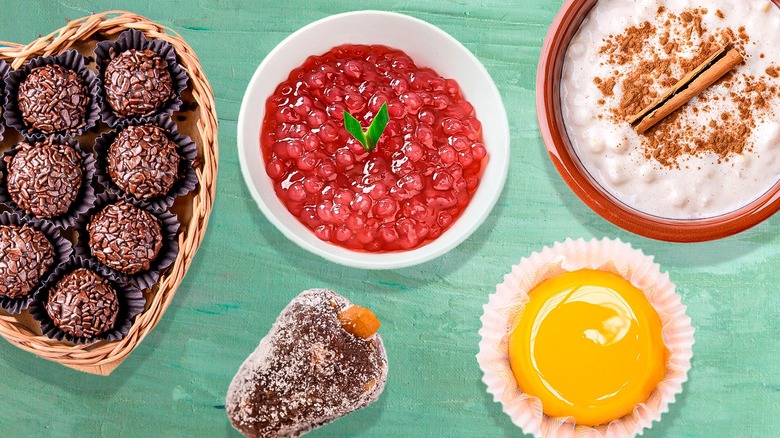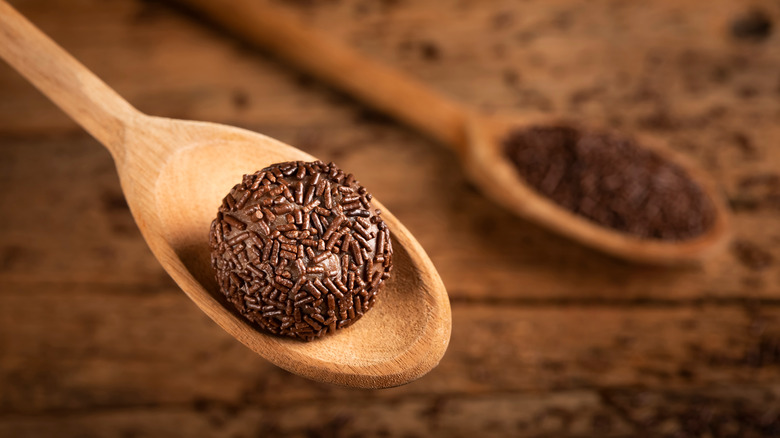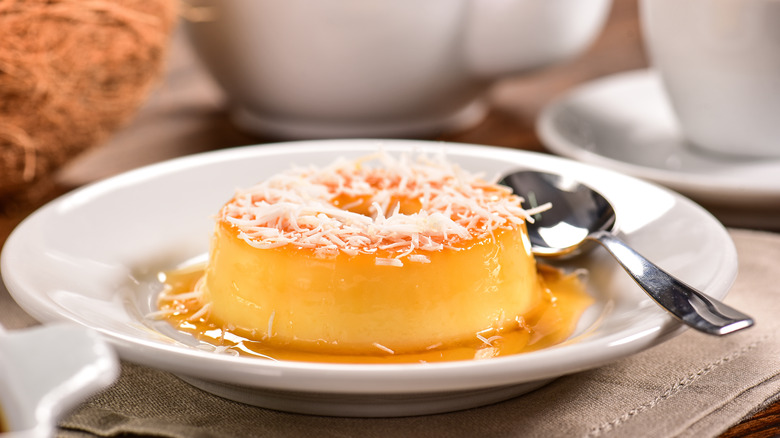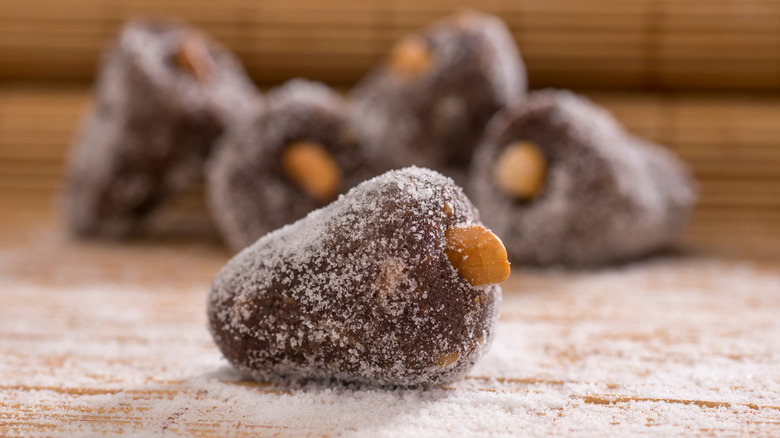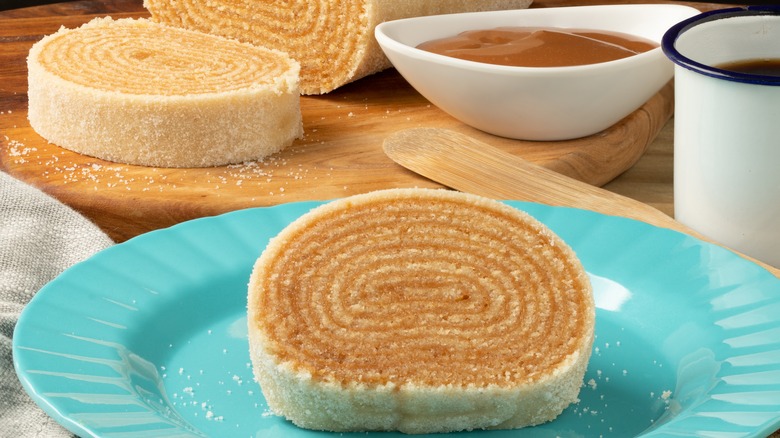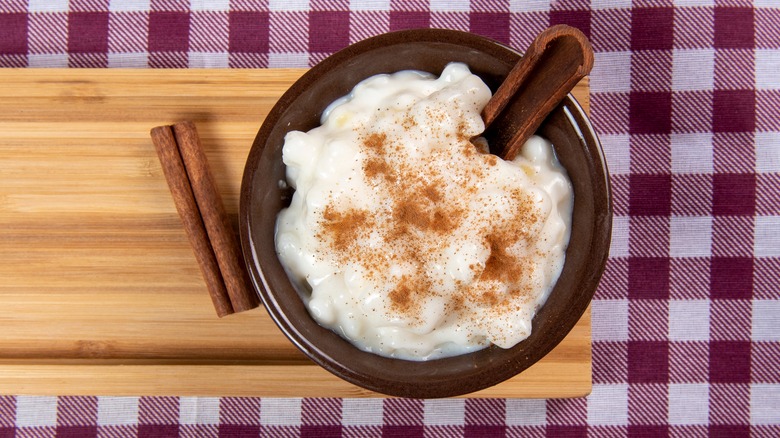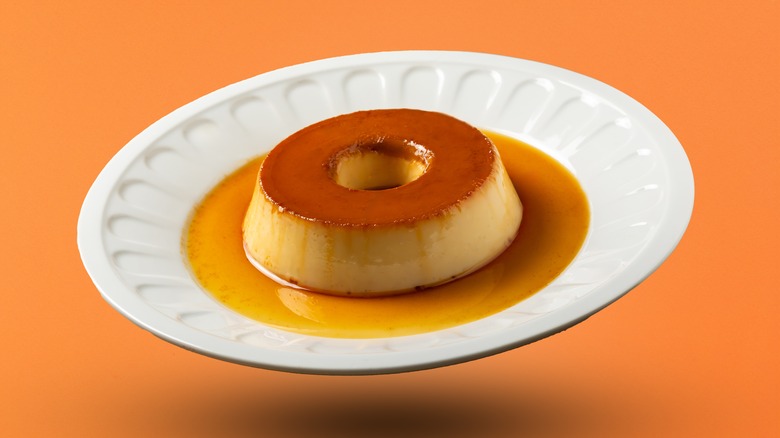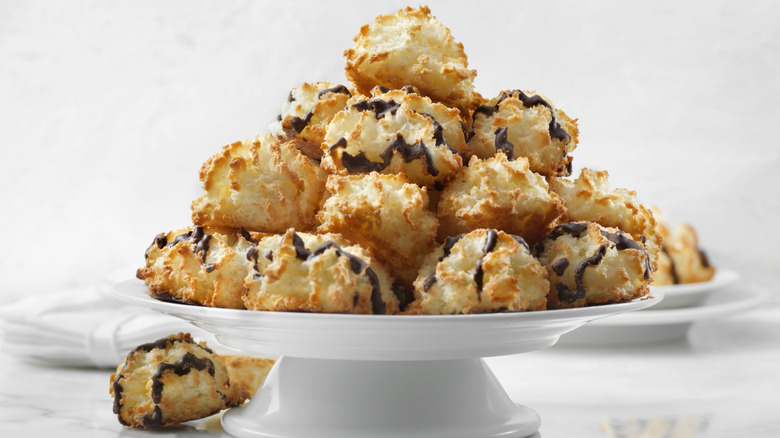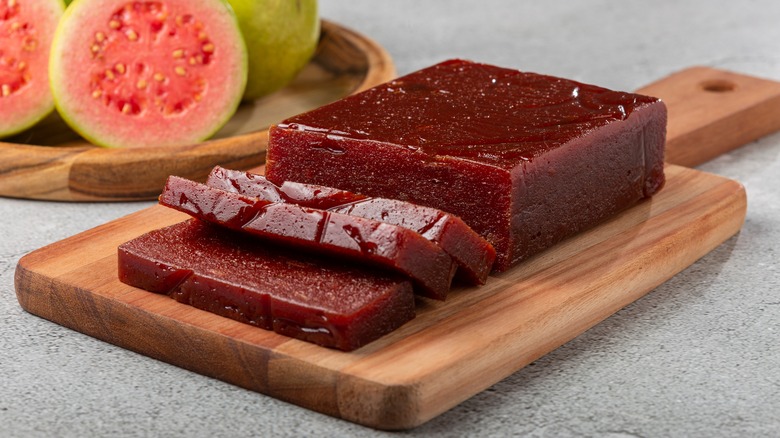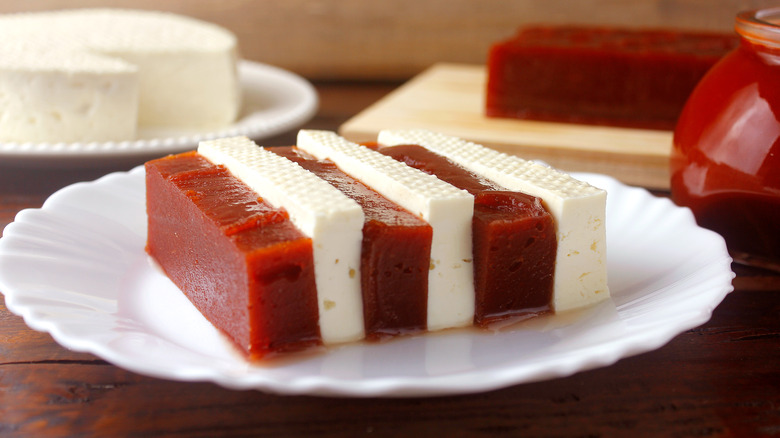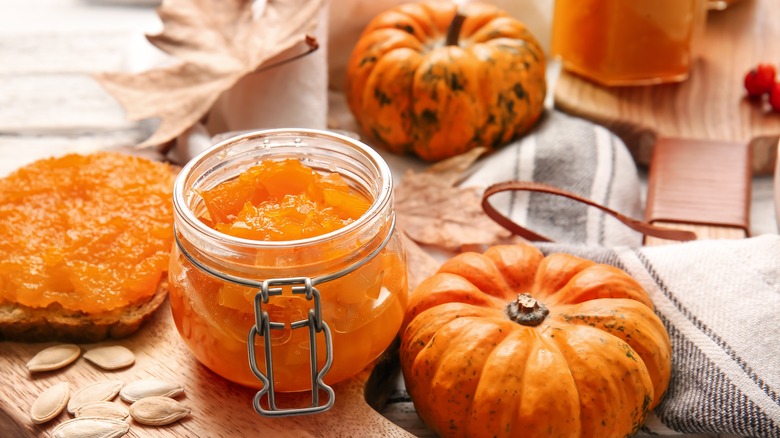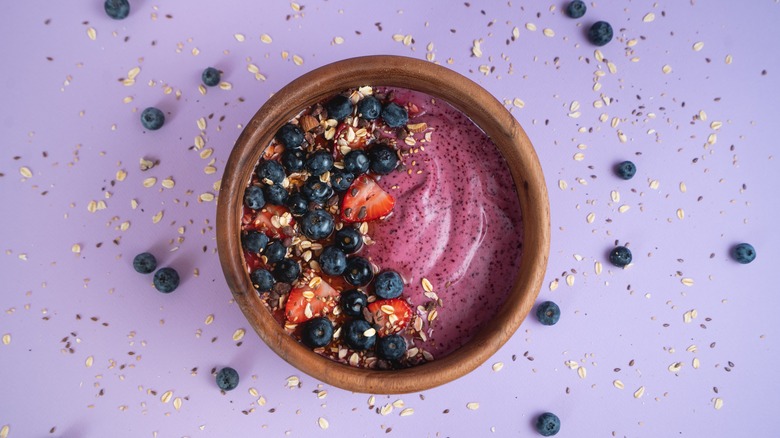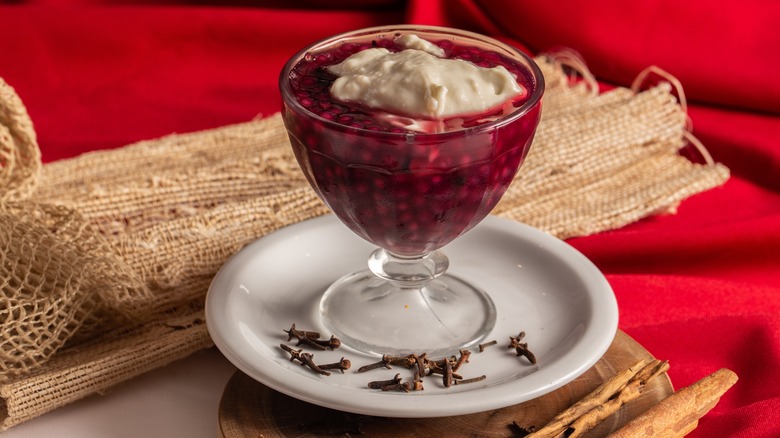12 Brazilian Desserts You Need To Try At Least Once
There's no shortage of sugar in continent-sized Brazil, the world's largest producer and exporter of sugar. With so much sweetener, there are as many desserts as you'd expect from a country that's so massive and diverse, with elements of European, indigenous, and African cultures.
Sugar is practically a part of the Brazilian DNA (if you've ever ordered Brazil's national cocktail, caipirinha, you know it's roughly half made of sugar), and no meal or celebration would be complete without a table full of docinhos (little sweets) as well as cakes and puddings.
If you make it to Brazil, you shouldn't have much trouble finding most of the delicious, unique sweets on this list, as you practically can't throw a rock in São Paulo without hitting a dessert street kiosk on the sidewalk. So, if you've got a sweet tooth, read on to find out about the 12 Brazilian desserts you have to try at least once.
Brigadeiro
If you've spent any time in Brazil, you've seen brigadeiro. Whether you're at home, passing by a dessert shop or a farmers market, or even sitting on the beach in Rio de Janeiro, brigadeiro is available just about everywhere in the country. Legend has it that this sweet confection was invented in Rio de Janeiro by female supporters of presidential candidate and brigadeiro (brigadier) Eduardo Gomes. It has since become arguably the most popular dessert in the country.
Brigadeiro is a remarkably simple recipe made with just butter, cocoa powder, and condensed milk. The mixed ingredients are molded into golf ball size and then rolled around in chocolate sprinkles. The condensed milk is gooey and sweet, so when you bite into a brigadeiro, you get a chewy mouthful of chocolatey, buttery flavor. But buyer beware: Brigadeiro is super rich, dense, and extremely tasty, so it's easy to overdo it when you get your hands on a box of these bite-sized treats. And if you feel like making your own at home, try this Chocolate-Cinnamon Brigadeiro recipe.
Quindim
When you think of Brazil, you might imagine a row of coconut palms swaying in the breeze, and you wouldn't be wrong. Coconuts not only thrive in tropical climates but in Brazilian cuisine, such as in quindim. It's a sweet egg custard dessert with a distinct bright yellow color and a tangy coconut flavor.
Portugal, Brazil's former colonizer, has a well-known love affair with desserts that are rich in egg yolks, like the world-famous Portuguese egg tart, and that eggy inclination made its way into this rich Brazilian dessert. The ingredient list only includes sugar, egg yolks, coconut milk, and shredded coconut, which are mixed together and placed in ring molds or muffin tins and baked in a water bath until set. The coconut floats to the top and forms a chewy crust that tastes like a macaroon, and once the quindims are cooled and flipped over, the coconutty crust holds up a shiny, rich dome of bright yellow custard that holds its shape when you cut into it. It'll melt in your mouth when you take a bite.
Cajuzinho
Another bite-sized Brazilian sweet that's likely to tantalize your taste buds is cajuzinho (little cashew). Cashews are native to northeast Brazil, where this luscious little dessert originated. Although they're named and typically shaped after cashews, cajuzinho is surprisingly made with peanuts in most of the country's regions. However, since the Northeast still has plenty of cashews, that's the ingredient used for cajuzinhos there.
The treat draws upon these four ingredients: peanuts (or cashews), sweetened condensed milk, cocoa powder, and granulated sugar. The peanuts are ground up with cocoa powder and then mixed into one big ball with condensed milk. After letting it sit for a while, little bits of the mixture — smaller than a golf ball — are ripped off and rolled into tiny oblong cashew shapes. To garnish, people usually roll them around in granulated sugar and stick a whole peanut in one end of the cajuzinho.
Bolo de rolo
Perhaps you've heard of a Swiss roll, but have you heard of a bolo de rolo (roll cake)? This delicious dessert has the basic rolled structure of its cousin, but it's distinctly Brazilian. Originating in the northeastern Brazilian state of Pernambuco, the bolo de rolo is such an iconic sweet that it was officially designated an "intangible cultural legacy" by state law in 2008, according to Food52.
A bolo de rolo is a true labor of love: Each cake layer is baked separately, spread with sweet guava paste, and rolled into the next layer. Although it's time-consuming, the end result is as beautiful as it is delicious. The bolo de rolo forms a tight cylinder that looks like a hypnotic spiral of guava paste alternating with the thin layers of cake.
The guava gives the bolo de rolo a distinguishing tropical taste, and a light sprinkling of granulated sugar on top adds an extra texture and sweetness. You've never had a cake quite like this one.
Canjica de milho
Brazilian winter may sound like an oxymoron, but certain regions in the country, especially in the far south, get pretty nippy when the season hits. Remember, winter begins in June in the southern hemisphere. During that month, a celebration called Festa Junina is widespread throughout the country, and a nice warm bowl of canjica de milho is often served to warm you up. The sweet treat's history runs deep: Canjica de milho has been around since the 17th century.
Milho (corn), as this dessert's name might suggest, is the most important ingredient in canjica de milho, but it's often made with hominy, which is the name for corn kernels that have undergone the process of nixtamalization. It involves soaking the kernels in a solution, rinsing, and repeating. Although the recipe might vary a bit from region to region, the corn or hominy is generally combined with sweetened condensed milk, coconut milk, and sugar. The ingredients are brought to a simmer until the mixture thickens up. The finished result gives a consistency similar to rice pudding, and you can top it with some cinnamon to eat warm while you cozy up by a fire.
Pudim
By now, you may have noticed that sweetened condensed milk stars in many Brazilian desserts, and pudim is no exception. Pudim is Brazil's answer to flan, which is a common custard dessert in Spain and throughout Latin America, with origins stretching back to the Roman Empire. Although pudim requires some precision, namely when caramelizing the sugar and ensuring it doesn't burn, it can be whipped up with four ingredients: eggs, milk, sugar, and sweetened condensed milk.
Traditionally, pudim is made in a bundt pan, a large cake pan with a hole in the middle to produce a round, donut-shaped product. Once the caramelized sugar is spread in the bottom of the pan, the rest of the custard is poured on top and cooked in a water bath until it solidifies. The result is a treat that's jiggly to the touch and creamy once in your mouth. It should taste sweet and rich with a hint of caramel flavor.
Cocada
Although coconuts aren't native to Brazil, they're used in many different dishes in Brazilian cuisine, including cocada, a sweet coconut dessert found throughout the country but is especially common in the state of Bahia. Like many aspects of Brazilian culture, cocada is a sweet product that came from complicated origins. It originated as a treat in the country's northeast made by enslaved people to enjoy at the end of the day.
This tropical delight is easily concocted with simple syrup, water, sugar, condensed milk, and coconut shreds — fresh coconut is optimal. The ingredients are stirred together and molded into balls with a spoon once the mixture thickens. They are then placed on a greased pan to cool and harden, though baking them instead is also an option. Nuts and chocolate are sometimes added for an extra kick. Ideally, you'll be munching on a chewy piece of cocada while you lay back in a hammock at the beach, but anywhere will do.
Goiabada
When you're looking for the taste of something tropical, few fruits deliver the sweet, tangy taste that guava does. And if you've learned anything from this article so far, you know that it wouldn't be a Brazilian dessert without a lot of sugar. And that's exactly what goiabada is: guava and sugar.
Guavas are native to Central and South America, and they're high in pectin, which is the compound that gives jams and jellies their thick consistency. Indigenous people have been eating guavas for centuries, and when the Portuguese colonized Brazil in the 1500s, they used guava to make jams, jellies, and sweets. Goiabada is typically thicker than jelly and is sold in a plastic-wrapped bar that can be sliced up and eaten by itself, spread on a piece of toast, or as part of a cake recipe. And goiabada isn't hard to find. This sweet treat is at practically every grocery store in Brazil, as well as roadside farm stands in rural areas.
Romeu e Julieta
Who can resist a love story? Especially when the lovers are marmalade and cheese. Not only is this super simple dessert a guaranteed crowd-pleaser, but it's also super easy to make and a feast for the senses. When it comes to the ingredients of Romeu e Julieta (Romeo and Juliet), there are plenty of options for the cheese and marmalade, and none of them are wrong.
Typically, the marmalade chosen is goiabada, and the cheese used is queijo minas — a salty, soft, wet cheese originating from the Brazilian state of Minas Gerais. The two ingredients are sliced up into equal-sized squares and stacked up and held together with toothpicks or arranged on a plate to make a visually appealing striped dessert of alternating cheese and marmalade layers. If goiabada is nowhere to be found, quince paste is a possible alternative because it maintains its shape, and instead of queijo minas, Mexican queso fresco or mozzarella may be used. Whatever ingredients are used to prepare the Romeu e Julieta, you'll see that this sweet and salty combo is a match made in heaven.
Doce de abóbora
If you're looking for new ways to eat pumpkin, doce de abóbora might be just the Brazilian dessert for you. Pumpkin is a very versatile fruit that can be roasted, steamed, and made into pumpkin pie, but have you ever experienced pumpkin jam? Because that's essentially what doce de abóbora is.
And if you want a taste of Brazil, this dessert is perfect because it's eaten all year round in Brazil, even though it's a Festa Junina staple. The pumpkin is peeled, cubed, and mixed with sugar, cinnamon, and cloves in a pot over low heat until the pumpkin softens and breaks down. It's then mushed together; once it thickens, it gets transferred out of the pot. Doce de abóbora is full of warming spices and often eaten with a salty white cheese to balance the sweetness of the pumpkin or spread on a piece of warm, crusty bread. It overlaps as a tropical dessert and a fall treat.
Açaí bowl
While açaí itself is just a berry, it becomes one of Brazil's favorite desserts when it's blended and topped with other fruits and accompaniments. In the United States, açaí has caught on as a healthy breakfast or snack fairly recently, but in Brazil, these sweet treats have been enjoyed for decades, and you can buy açaí bowls just about anywhere in Brazil. They're known as a snack that will cool you down on the beach after a long day in the sun, and in popular areas, vendors walk up and down the beach with a cooler, selling them to sunbathers.
Açaí is known for its unique flavor of fruitiness with slightly bitter, earthy undertones and its distinctive deep purple color that gives an açaí bowl a beautiful violet hue. When it comes to topping your açaí bowl, the most common choices are bananas, granola, and honey. Though in Brazil, it's also often topped with paçoquinha — a sweet, dry, and crumbly peanut candy. Açaí has also taken off among health-conscious food lovers because of its extremely high antioxidant and phytochemical content. These berries may help your body thrive by aiding weight loss, promoting a healthy heart, and improving cognitive function, according to Gleneagles Hospital. So next time you're looking for a healthy Brazilian dessert to cool you down and fill you up, try an açaí bowl.
Sagu
Tapioca is a super versatile ingredient used for all sorts of applications in Brazilian cooking. It's made from the vegetable yucca, used to make fries, flour, and tapioca pearls. The latter is the main ingredient in sagu, a dessert common in Rio Grande do Sul, Brazil's southernmost state. Rio Grande do Sul also happens to be home to the most active wine region in the country, and wine features heavily in this creamy, chewy treat.
Sagu is made by cooking tapioca pearls until they are just al dente and then finishing the cooking process in a bath of red wine along with cinnamon and orange peel. The alcohol cooks off during the process, and you're left with the rich, slightly acidic flavor of red wine and the warming notes of cinnamon and orange. To balance out this intense flavor, the tapioca is topped with either ice cream or crème anglaise, a light, sweet custard sauce. Sagu is typically served as a dessert, usually after a churrasco, the region's world-famous barbecue.
